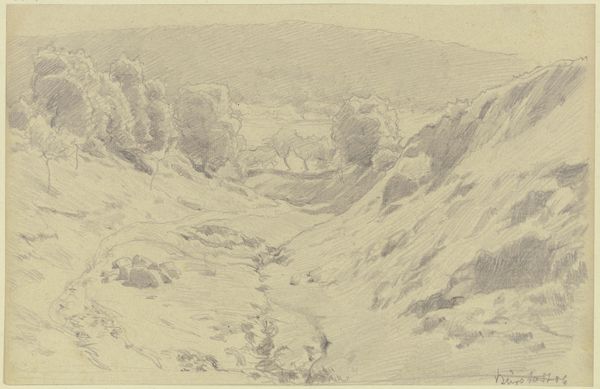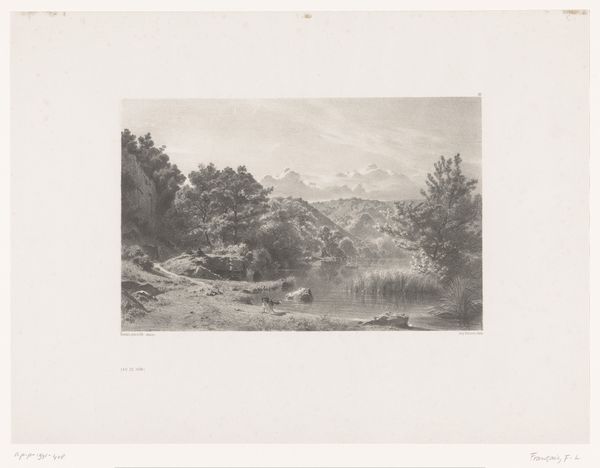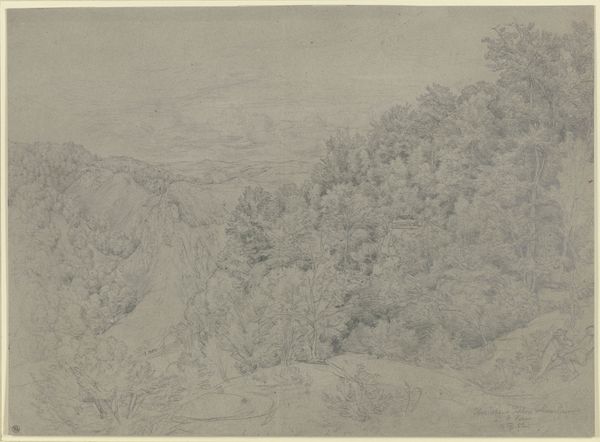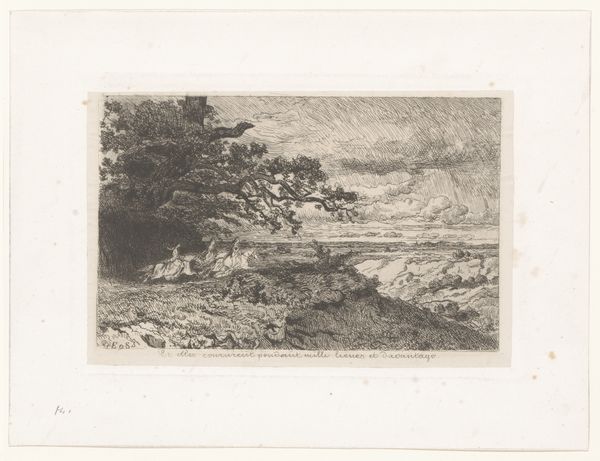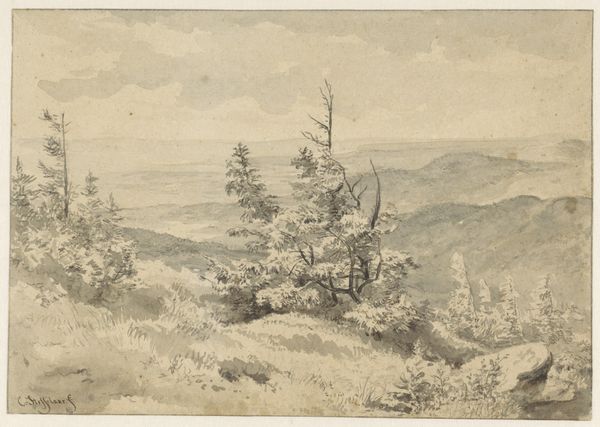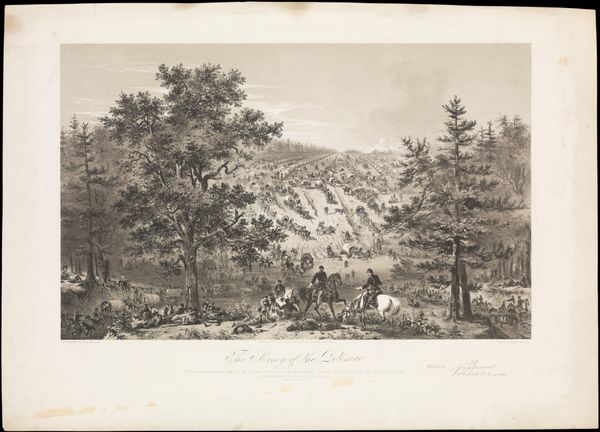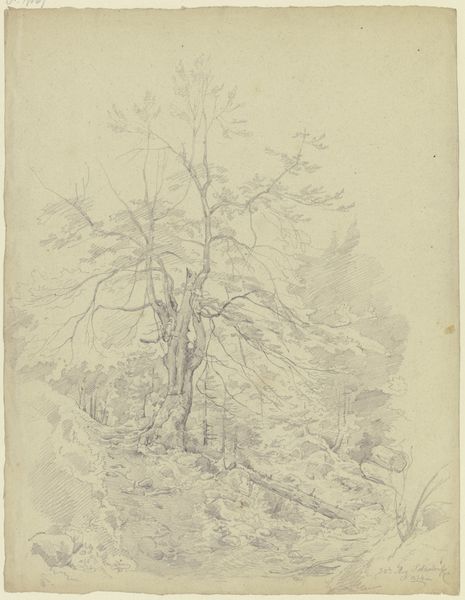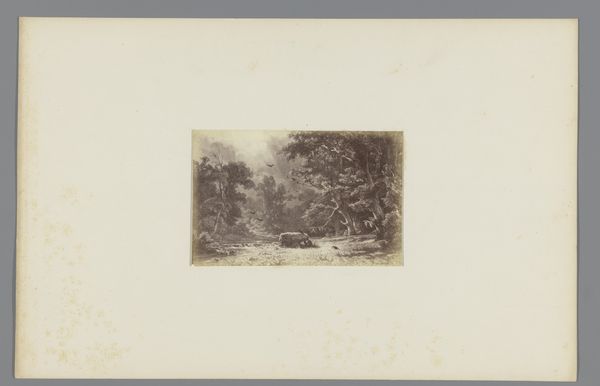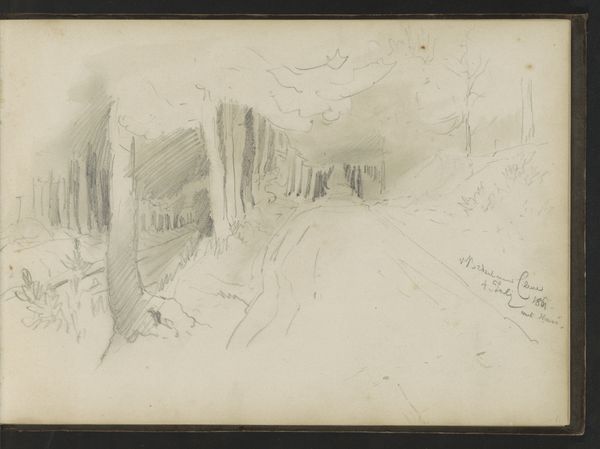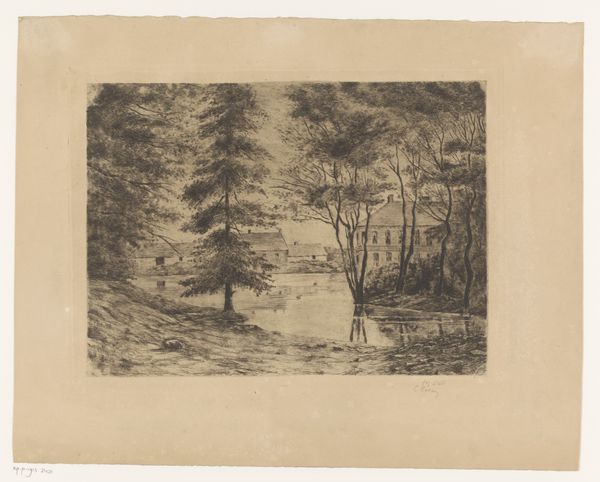
drawing, paper, pencil
#
drawing
#
dutch-golden-age
#
pencil sketch
#
landscape
#
paper
#
form
#
romanticism
#
pencil
#
line
#
pencil work
#
realism
Dimensions: height 296 mm, width 470 mm
Copyright: Rijks Museum: Open Domain
Curator: Looking at this pencil drawing, it evokes a rather quiet mood, wouldn't you say? Almost melancholic. Editor: Absolutely. It’s spare, yes? Let me introduce it. This work, "Weg door bergen met uitzicht over vlak land" or "Road Through Mountains Overlooking Flat Land" is by Cornelis Lieste, made sometime between 1827 and 1861. Look at how the artist has used just pencil on paper to define such expansive space. What does this suggest about 19th century artistic vision and practices to you? Curator: Well, examining the medium – pencil on paper – reveals accessibility. Sketches like this, inexpensive and portable, would have allowed artists to record landscapes directly, enabling greater opportunities to study places more efficiently and create more landscapes on the go to eventually be rendered more carefully into formal paintings in studios. The sketch becomes a tool. Editor: Precisely! The *tool*. Consider this drawing not just as a preliminary study, but as a vital component of the artistic process that allowed for democratization. This reflects a changing social landscape in 19th century artistic production, too. Artists were increasingly unbound by the formal studio, with less constraints they were enabled to record and present a much broader range of scenery to the public. Curator: It does make one wonder, though, about the context of its creation. Did Lieste see the location as it was, or was he aiming for something deeper? It is romanticism, after all, even within the confines of realism and its lines. Editor: True. Its form is deceptive because of how 'simple' or immediate it looks. Yet it speaks volumes about control. This is not necessarily how nature 'is', but is more concerned about the way nature is conceived, manipulated by the artist to frame and deliver an idea: what does this composition suggest in relationship to our contemporary times, perhaps the illusion of control? Are the roads 'leading somewhere' in society today, or merely offering an *illusion* of such? Curator: It seems he certainly captured more than just the scenery before him. A sketch of something, but evocative and so self-contained, an act in itself rather than just a means. Editor: So much potential bound within the deceptively simple medium of paper and pencil. Let’s leave our listeners with that paradox.
Comments
No comments
Be the first to comment and join the conversation on the ultimate creative platform.
